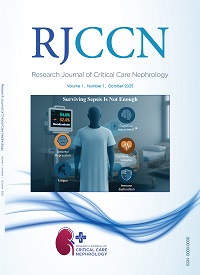Diagnostic Efficacy and Imaging Characteristics of MRI Combined with CT in Children with Duplex Kidney
DOI:
https://doi.org/10.60186/RJCCN.21Keywords:
duplication of kidney, MRI, CT, diagnostic performance, imaging characteristicsAbstract
Introduction. To analyze the diagnostic efficacy and imaging
characteristics of MRI combined with CT in children with
duplication of kidney.
Methods. A retrospective analysis was conducted of the clinical
data of 40 children with duplication of kidney admitted to our
hospital between January 2019 and January 2024 and confirmed
surgically. All patients underwent MRI and CT examinations,
with surgery as the gold standard. The diagnostic efficacy of MRI
and CT in children with duplication of kidney was analyzed.
Results. CT confirmed 32 cases of duplication of kidney, with a
diagnostic rate of 80%. MRI confirmed 33 cases of duplication of
kidney, with a diagnostic rate of 82.50%. CT combined with MRI
confirmed 39 cases of duplication of kidney, with a diagnostic
rate of 97.50%. The diagnostic rate of CT combined with MRI for
duplication of kidney was higher than that of CT or MRI alone
(P < .05). The diagnostic accuracy of CT combined with MRI for
hydronephrosis duplication was 100%, significantly higher than
the 77.27 and 81.82% rates of CT and MRI alone (P < .05) . There
was no significant difference in the diagnostic accuracy of CT or
MRI alone for developmental and dysplastic duplication (P > .05).
Conclusions. MRI combined with CT has a high diagnostic efficacy
for duplex kidney and its classification in children, which can
provide a reference for clinical diagnosis and treatment and can
be vigorously promoted in clinical practice.





